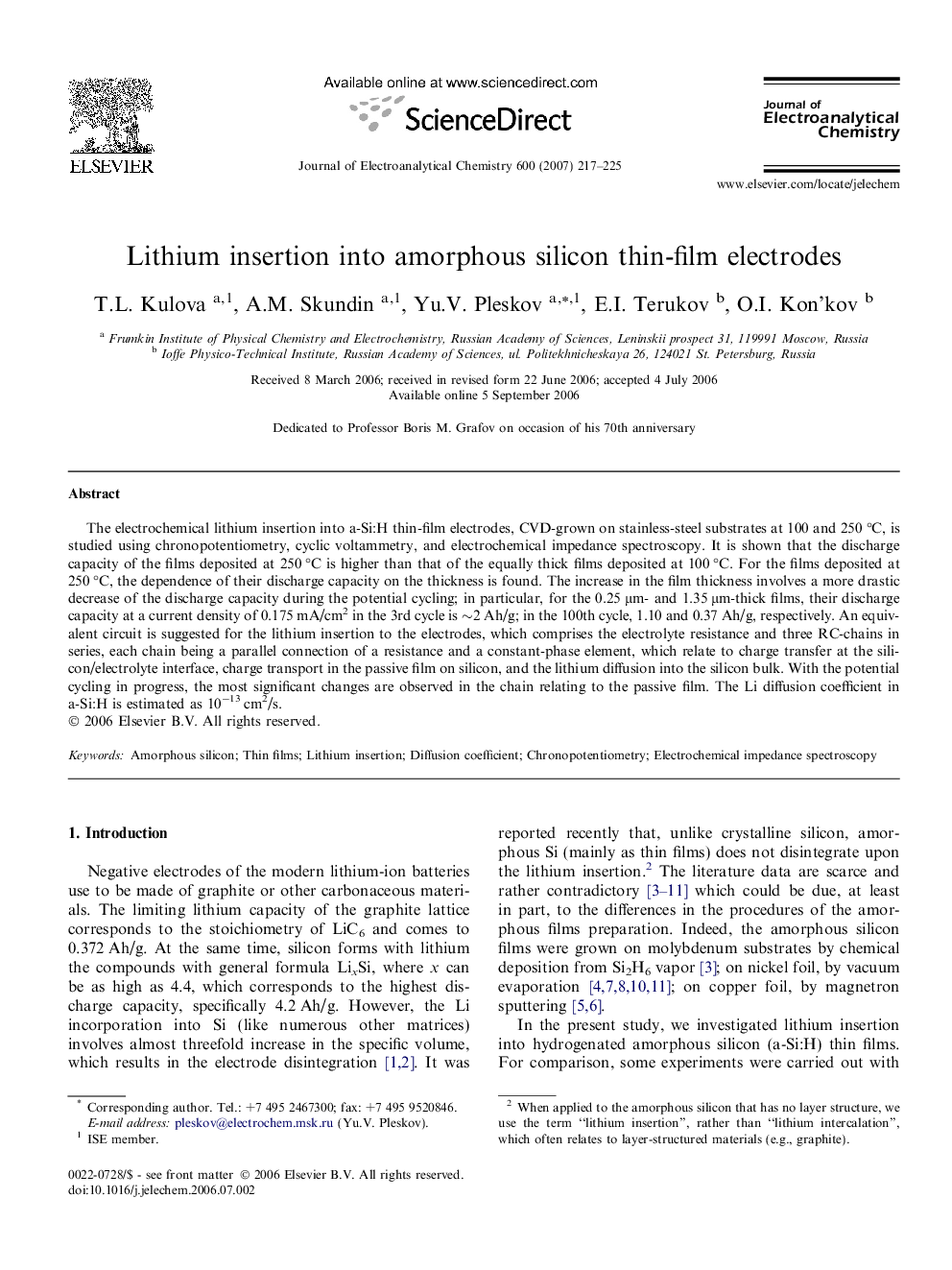| Article ID | Journal | Published Year | Pages | File Type |
|---|---|---|---|---|
| 221015 | Journal of Electroanalytical Chemistry | 2007 | 9 Pages |
The electrochemical lithium insertion into a-Si:H thin-film electrodes, CVD-grown on stainless-steel substrates at 100 and 250 °C, is studied using chronopotentiometry, cyclic voltammetry, and electrochemical impedance spectroscopy. It is shown that the discharge capacity of the films deposited at 250 °C is higher than that of the equally thick films deposited at 100 °C. For the films deposited at 250 °C, the dependence of their discharge capacity on the thickness is found. The increase in the film thickness involves a more drastic decrease of the discharge capacity during the potential cycling; in particular, for the 0.25 μm- and 1.35 μm-thick films, their discharge capacity at a current density of 0.175 mA/cm2 in the 3rd cycle is ∼2 Ah/g; in the 100th cycle, 1.10 and 0.37 Ah/g, respectively. An equivalent circuit is suggested for the lithium insertion to the electrodes, which comprises the electrolyte resistance and three RC-chains in series, each chain being a parallel connection of a resistance and a constant-phase element, which relate to charge transfer at the silicon/electrolyte interface, charge transport in the passive film on silicon, and the lithium diffusion into the silicon bulk. With the potential cycling in progress, the most significant changes are observed in the chain relating to the passive film. The Li diffusion coefficient in a-Si:H is estimated as 10−13 cm2/s.
